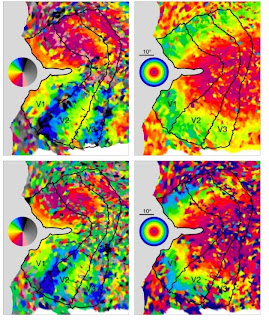
A decoding system unveiled this week in Nature by neuroscientists from the University of California at Berkeley. The scientists used a functional magnetic resonance imaging machine -- a real-time brain scanner -- to record the mental activity of a person looking at thousands of random pictures: people, animals, landscapes, objects, the stuff of everyday visual life. With those recordings the researchers built a computational model for predicting the mental patterns elicited by looking at any other photograph. When tested with neurological readouts generated by a different set of pictures, the decoder passed with flying colors, identifying the images seen with unprecedented accuracy.
No comments:
Post a Comment